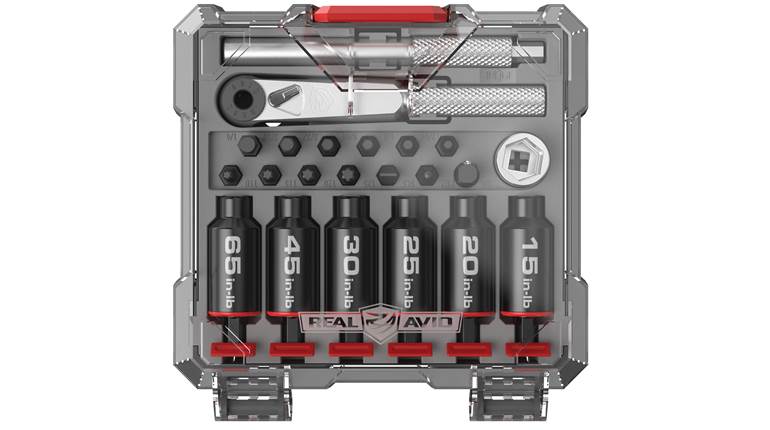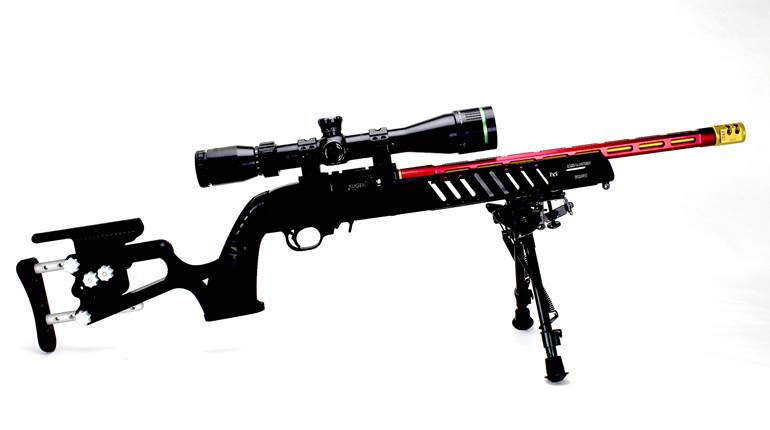
I have always had a soft spot for the M1 carbine. The ‘.30 carbine’ combines history, utility, handiness and sheer fun in a way few other long guns can match. I was excited to see a wave of surplus M1s make their way back home in the last couple of years. Every shooter should get to experience and enjoy the prolific, little long arm of the Second World War.
Last year, my cousin gave me an M1 that was our grandfather’s, figuring that I would shoot it more than he was. The M1 served duty in World War II, and it was made by Saginaw Steering Gear. I was thrilled to have it and immediately cleaned it up. I believe this little carbine was the first centerfire rifle I ever fired as a youngster, and I remember being immediately taken by the gentle recoil and sharp bark of the M1. I began to think about shooting the early war M1 in context; firing it practically much as it may have been used in its role as a personal defense gun, or as a light rifle by those not typically armed with the Garand.

As I experimented, I settled on a 10-shot drill consisting of three stages, each having a time limit of 3 seconds. I call it the 3.0 Carbine Drill with the decimal point linking the .30 cal. and the 3.0 seconds.
The 3.0 Carbine Drill consists of rapid-fire strings of three shots fired at 10 and 20 yards, followed by single shots fired from classic marskman positions at 50 yards. The chart below details the stages.
|
Stage |
Start Position |
Rounds |
Distance |
Time Limit |
|
1 |
High Port |
3 |
10 yards |
3 |
|
2 |
Low Ready |
3 |
20 yards |
3 |
|
3 |
Kneeling/Ready |
1 |
50 yards |
3 |
|
|
Sitting/Ready |
1 |
50 yards |
3 |
|
|
Prone/Ready |
1 |
50 yards |
3 |
|
|
Standing/Ready |
1 |
50 yards |
NTL |
For the target, I use a simple piece of 8.5”x11” copy paper folded in half to make a 5.5”x8.5” vital zone. I score the strings as hit or miss, e.g., 8/10. Late hits deduct a half point. The target is just small enough to give the shooter a nice challenge and force good technique. However, the target is large enough to allow even worn M1s with modest accuracy and surplus ammo to have a reasonable chance to clean the drill. My grandfather’s old carbine is humble in the accuracy department, but even with truly nasty surplus ammo, it is able to print 3.5” five-shot groups at 50 yards and can easily hold the half page.
Whenever I teach, I often query groups of experienced shooters what they think is a practical time frame for a target of opportunity or to expect a shooter to respond within in an emergency beyond personal space. Without exception, the answers register around 3 seconds. This 3-second span is the golden default when looking for a practical time limit for many shooting tasks or scenarios. In this case, each stage has the shooter working deliberately but with a sense of urgency to make the time limit.
Stage 1 has the shooter at the high port position, with the butt of the carbine somewhere near the belt line and the muzzle up just under the line of sight. There is a round chambered and the safety on. The target is 10 yards away. In the chaos of battlefield conditions, whether the villages of Italy and France or the vegetation of a Pacific island, 10 yards is a good ballpark distance for soldiers unexpectedly coming face to face with enemy. In World War II Medal of Honor recipient Audie Murphy’s autobiography, To Hell and Back, he speaks on several occasions about running suddenly into German soldiers at close range and having to rapidly fire multiple shots from his carbine. He tells how he had to rapidly engage two soldiers who unexpectedly hopped into a trench he was using to approach an objective under cover. In other battles, he mentions having to rapidly fire multiple shots at a single soldier, both to overcome misses and to stop the enemy before it had a chance to hit Murphy.

Stage 1 is in this spirit, with the shooter mounting the M1 to a firing position and firing three rounds into the half-page target in 3 seconds. Many shooters will benefit from the old, close-range aperture sight technique of boosting speed by aiming with the front sight while keeping it roughly centered over the top of the aperture leaf rather than taking the time to look through the aperture and finely center the sights. I first learned this technique when taking a close-quarters military class with the old carry-handle M16A2 and later found that some Marines in the Pacific campaign were known to roughly file a big express-style ‘V’ in the top of the aperture leaf for a similar approach.
Stage 2 has the shooter at 20 yards, beginning with the carbine in the shoulder and muzzle depressed at the base of the target stand at the low ready, safety on. On the start signal, the shooter again fires three shots in 3 seconds. As I thought about this distance, I mulled over how it might relate to my grandfather’s generation; suppressing a pill box or machine guns nest’s firing port as a fellow GI moved to place a satchel charge or toss a grenade.
It also reminded me of one of my all-time favorite Medal of Honor citations. Hospital Apprentice First Class Robert Bush, a Navy Corpsman with 5th Marines on Okinawa, was treating a critically wounded Marine officer when a banzai charge broke through the perimeter and threatened to overrun his casualty-collection point. Bush drew his pistol and engaged the enemy with one hand while holding a plasma bottle aloft with the other. As more of the enemy approached he picked up a discarded carbine, accounted for six of the enemy and protected the wounded, despite the loss of one of his eyes due to enemy fire. It’s an incredible story that illustrates, in one small way, why Marines feel the way they do about their corpsman brothers.
The third stage has the shooter 50 yards from the target. Here the shooter will take up the classic marksmanship positions of prone, sitting and kneeling. The shooter will begin each string of this stage in position while aiming with the safety on. On the start signal, the shooter has 3 seconds to swipe the safety off and carefully press the trigger to make the shot. The carbine is wonderfully light and handy, but as the distance increases, its lightness does little to keep the gun still against the somewhat heavy and creepy military-grade triggers on some specimens. Many shooters will find the time limit realistic but challenging in their first few attempts. The final string is a single shot from standing at the 50-yard line with no time limit.
Going again to Audie Murphy’s account of combat in the European theater, he mentions multiple instances of taking a supported position at midrange and waiting patiently for a German’s helmet to reappear over or around what cover they were using to make a well-aimed shot. Murphy, the most decorated enlisted soldier of the war, was evidently quite fond of the M1 carbine. In his book he describes his M1 as “his lucky carbine” and relates a fellow soldier asking to take possession of the lucky .30 after he was wounded and had to go to the field hospital for treatment.

Even for my own use, I appreciate that the 3.0 Carbine Drill is only 10 rounds. When I was growing up, .30 Carbine ammo was plentiful and cheap, even if the M1s themselves were often pricey. The ammo is, thankfully, still available, but it has become somewhat costly. A shooter can enjoy this drill a time or three on a range day and feel like every round was well spent.
The personal defense role for which the M1 was designed can be filled by a variety of contemporary arms. The large-format pistols that have become so common and popular over the last few years are one expression of that concept. I fired the 3.0 Carbine Drill with a BCM .300 Blackout pistol and a couple of the excellent H&K SP5s. The drill was a great match for these guns, proving a nice level of challenge and practicality, even with their advantage in red-dot optics and modern ergonomics.
Look closely at the iconic image of Marines raising the American flag atop Mt. Suribachi during the battle of Iwo Jima. The little longarm is visible right there across the back of one of the Marines. The M1 carbine is pure Americana and shooting fun wrapped into one. A significant number of shooters were hooked on the sport after a few shots with the M1 carbine; I know I was. I’d like to thank my cousin Jason for bringing me full-circle with this family heirloom, and I hope the 3.0 Carbine Drill will give shooters a reason to take their carbines out and enjoy it.





































